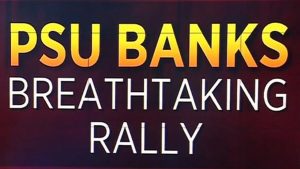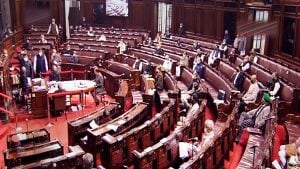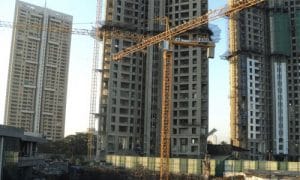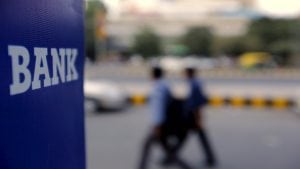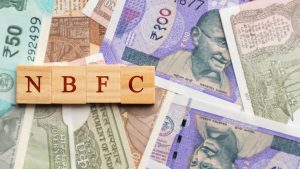NBFCs to witness revival in growth this year; may see slight uptick in NPAs

KV Prasad Jun 13, 2022, 06:35 AM IST (Published)
 Listen to the Article (6 Minutes)
Listen to the Article (6 Minutes)
Summary
The average increase is expected to be around 150 basis points (bps) in gross NPAs, being a proportion of assets moving from SMA2 buckets, the report had said.
Non-banking financial companies (NBFCs) showed resilience in 2021 despite the coronavirus pandemic woes and are expected to witness continued momentum in growth this year. This year, the growth will be driven by the uptick in the economy, stronger balance sheet, higher provisions, and improved capital positions of NBFCs.
On the other hand, gross non-performing assets (NPAs) of NBFCs are likely to rise, following the Reserve Bank of India’s (RBI) move to tighten the NPA norms in November 2021. “Our baseline assumption is that the worst is behind them (NBFCs) and things will start improving here on. We expect NBFCs to show higher growth and they will benefit from the economy moving up,” Crisil Ratings Ltd Senior Director and Deputy Chief Ratings Officer Krishnan Sitaraman said.
The asset under management (AUM) of shadow banking players is expected to grow at 6-8 percent in the current financial year and 8-10 percent in the next financial year, Sitaraman said. Recently, the Trends and Progress of Banking of India in 2020-21 report released by the RBI said, “With the increased pace of vaccinations and the broadening revival of the economy, the NBFC sector is expected to remain buoyant.” ICRA Ltd Vice-President and Sector Head AM Karthik said the NBFC sector, including housing finance companies (HFCs) but excluding infra-focussed and government-owned entities, experienced a roller-coaster trend in the past 12-18 months.
The rebound in the second-half of FY2021 on the back of the pent-up demand and after relaxation of the COVID-19 lockdown supported growth and earnings performance, he said. Karthik also said this fragile recovery was hindered by the second wave of the pandemic in the first quarter of FY2022.
The impact was relatively limited vis-a-vis the past fiscal, with the sector bouncing back in the second quarter of FY2022 in terms of disbursements and AUM (asset under management) growth, he added. Mortgage financier Indiabulls Housing Finance’s Deputy Managing Director Ashwini Kumar Hooda said, “I think 2022 will be a very good year. Already, we have seen that real estate (sales) has picked up and volumes are almost 30-50 percent higher than the previous year.” With lower interest rates, rising income and stable property prices, there will be demand for home and home loans.
“So, the growth in home loans will be at least 15-20 percent during the year 2022,” he said. In the current cycle, all home sales are backed by end-user demand and there are no investors in the market, he added.
To strengthen supervision over NBFCs, the RBI introduced scale-based regulation and revised NPA recognition and upgradation norms during 2021. The revised norms included the classification of special mention account (SMA) and NPA on a day-end position basis and upgrade from an NPA to standard category only after clearance of all outstanding overdue.
CARE Ratings Senior Director Sanjay Agarwal said that with the new RBI’s asset classification norms, NPAs of NBFCs are likely to be elevated compared to FY21 levels. In a report released in November 2021, CARE Ratings said there would be an increase of up to 300 basis points (bps) in gross NPAs with a limited impact for shorter-tenure loans due to the revised NPA norms.
The average increase is expected to be around 150 basis points (bps) in gross NPAs, being a proportion of assets moving from SMA2 buckets, the report had said. Sitaraman expects reported NPAs for NBFCs to rise between 25-300 basis points, depending on which segment they are operating in.
While for a home loan and gold loans, NPAs will be in the lower end of the range; and for MSMEs or unsecured loan NBFCs, it will be at the higher end of the range, he said. “However, this will not impact the fundamental asset quality material because it is more of an accounting metrics,” Sitaraman said.
According to the Financial Stability Report (FSR) released by the RBI in December, the gross NPA ratio of NBFCs, which had declined in September 2020 reflecting the standstill on asset classification prevalent then, rose to reach 6.5 percent as at the end of September 2021. In December, the RBI brought in the prompt corrective action (PCA) framework, which was aimed at increasing market discipline among non-bank players and aligning their regulations at par with those of banks.
The norms brought in a risk threshold monitoring for NBFCs based on the total capital, tier-1 capital and net NPAs. The framework will come into effect from October 1, 2022, based on the financial position of NBFCs on or after March 31, 2022. PCA framework, which prescribes a certain level of NPA number, means NBFCs will focus more on the collection and will not allow an account to fall into NPA category, said Pankaj Naik, associate director (financial institutions) of India Ratings and Research.
In 2021, the RBI superseded the boards of Reliance Capital Ltd, Srei Infrastructure Ltd and Srei Equipment Finance. The central bank also initiated the corporate insolvency resolution process (CIRP) against the three defaulting NBFCs. Dewan Housing Finance Ltd (DHFL), which was facing insolvency proceedings, was acquired by Piramal Enterprises in 2021. The defaulting company was the first NBFC to be sent to National Company Law Tribunal (NCLT) in 2019 by the RBI.
In terms of funding, NBFCs are seeing improvement in their access to capital. The funding condition of NBFCs is stabilising because banks are lending to them. Mutual funds, that had become very cautious to lend to NBFCS, have now also started lending. NBFCs are also diversifying their funding base by looking at retail borrowing,” Crisil’s Sitaraman said.
The financial system is maturing from a bank-dominated space to a hybrid system wherein non-bank intermediaries are gaining prominence, the Trends and Progress on Banking in India 2020-21 said.

Elon Musk forms several ‘X Holdings’ companies to fund potential Twitter buyout
3 Mins Read
Thursday’s filing dispelled some doubts, though Musk still has work to do. He and his advisers will spend the coming days vetting potential investors for the equity portion of his offer, according to people familiar with the matter

KV Prasad Journo follow politics, process in Parliament and US Congress. Former Congressional APSA-Fulbright Fellow













 Listen to the Article
Listen to the Article  Daily Newsletter
Daily Newsletter





